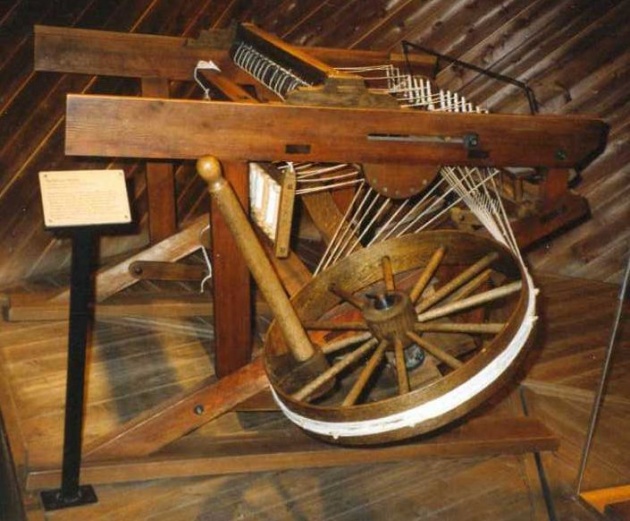The Spinning Jenny is a multi-spindle frame. It was invented in 1764 by James Hargreaves in stanhill, Oswaldtwistle, Lancashire in England. The device reduced the amount of work needed to produce yarn, with a worker able to work eight or more spools at once. This grew to 120 as technology advanced.
James Hargreaves was born in Oswaldtwistle, near Blackburn, around 1720. Blackburn was a town with a population of about 5,000, known for the production of "Blackburn greys," cloths of linen warp and cotton weft. They were usually sent to London to be printed. At the time, cotton production could not keep up with demand, and Hargreaves spent some time considering how to improve the process. The flying shuttle (John Kay 1733) had increased yarn demand by the weavers by doubling their productivity, and now the spinning jenny could supply that demand by increasing the spinners' productivity even more. The machine produced coarse thread.
The idea was developed by Hargreaves as a metal frame with eight wooden spindles at one end. A set of eight rovings was attached to a beam on that frame. The rovings when extended passed through two horizontal bars of wood that could be clasped together. These bars could be drawn along the top of the frame by the spinner's left hand thus extending the thread. The spinner used his right hand to rapidly turn a wheel which caused all the spindles to revolve, and the thread to be spun. When the bars were returned, the thread wound onto the spindle. A pressing wire (faller) was used to guide the threads onto the right place on the spindle.




